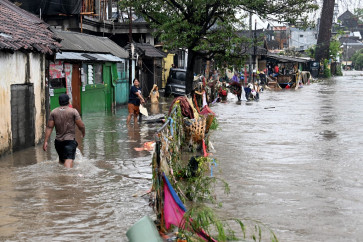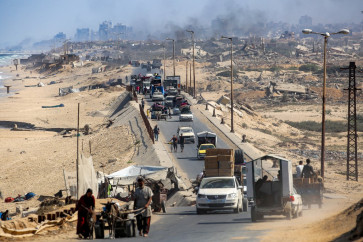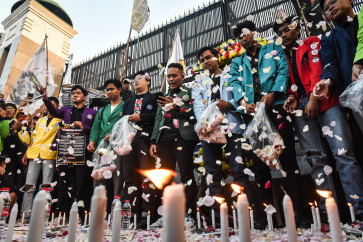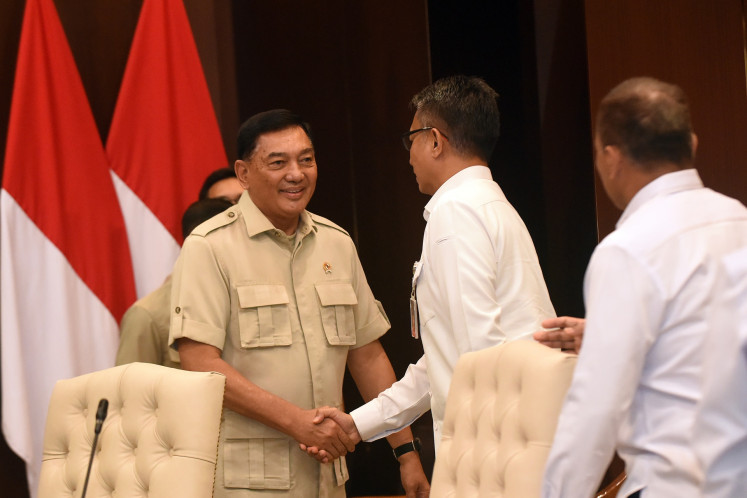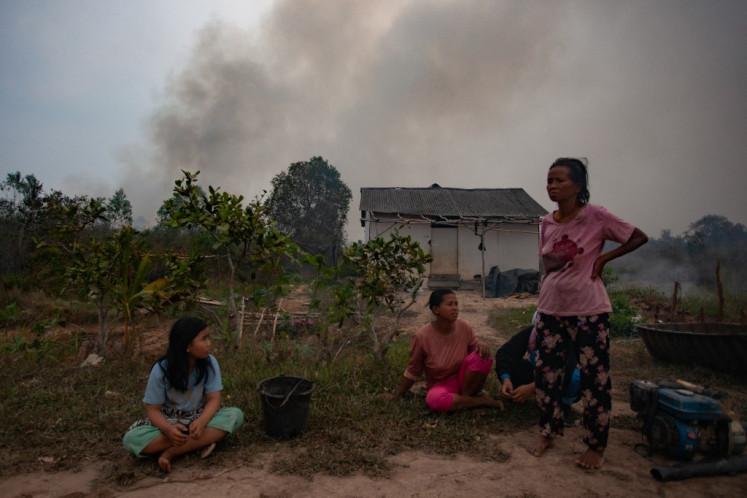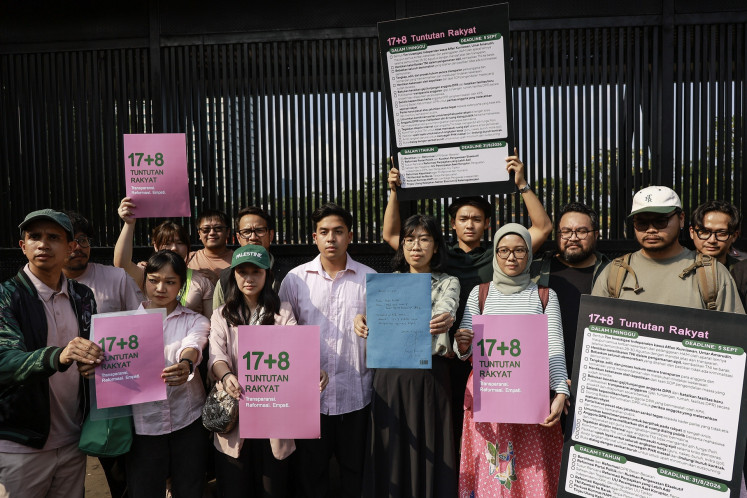Popular Reads
Top Results
Can't find what you're looking for?
View all search resultsPopular Reads
Top Results
Can't find what you're looking for?
View all search resultsLong-delayed Kalija pipeline enters trial operation
After years of delays and changes, the development of a 207-kilometer gas pipeline connecting an offshore block in Central Java to an inland power plant is finally complete
Change text size
Gift Premium Articles
to Anyone
A
fter years of delays and changes, the development of a 207-kilometer gas pipeline connecting an offshore block in Central Java to an inland power plant is finally complete.
The first section of the Kalimantan-Java (Kalija) pipeline was now under a trial operation to deliver gas from the Kepodang field in the Muriah block to the coal-fired power plant in Tambak Lorok, Semarang, Perusahaan Gas Negara (PGN) director Wahid Sutopo said.
'Work on the pipeline has finished and we are now preparing for a full commercial operation, hopefully before year-end,' he said.
The 207-km pipeline has the capacity to deliver up to 150 million standard cubic feet per day (mmscfd).
As the pipeline is still in the trial stage, the volume of gas delivery is still far lower than capacity and is expected gradually to increase. The current gas supply for the pipeline comes from Kepodang field, which started its production at around 56 mmscfd in late August, according to the block's operator, Petronas Carigali Muriah Ltd.
The gas delivery from Kepodang is based on a sales and purchases agreement between Petronas and state-owned electricity company PLN as the operator of the Tambak Lorok power plant. The contract will be valid until 2026, according to the Upstream Oil and Gas Regulatory Task Force (SKKMigas)
Kalija pipeline is developed and operated by Kalimantan Jawa Gas (KJG), in which PGN holds an 80 percent stake through its subsidiary Permata Graha Nugraha. PGN entered the project last year, following a deal with Bakrie & Brothers as the winner of the project's tender held in 2006. However, the winner faced difficulties in developing the pipeline project, which will connect populous Java to the gas-rich eastern part of Kalimantan.
The Kalija pipeline is only part of the inter-island pipeline network, though the next stage remains unclear as the developer is still calculating various issues, including gas supply and the financial feasibility of the project.
'In Kalimantan, there's still a gas surplus, partly because there are still reserves from Mahakam. However, the block will see a change in operatorship, which will affect its production,' PGN investor relations head Nusky Suyono remarked.
Following the expiry of the block's production-sharing contract, the government has decided to end the operatorship currently held by Total E&P Indonesie and allow Pertamina to operate the block as of 2017. The Energy and Mineral Resources Ministry has been urging Pertamina to ensure that production is not affected by a change in the operatorship. Gas output from the Mahakam block currently contributes around 25 percent of national gas production and is the main source for Bontang Liquefied Petroleum Gas (LNG) plant in East Kalimantan.
Delivering gas through pipelines, Nusky added, could be cheaper than changing it into LNG for shipment. 'Gas distributed through pipelines only costs toll fees, while LNG entails liquefaction and re-gasification costs. However, for distribution through pipeline, there has to be a large volume to lower the price per unit,' he said.
Development of gas infrastructure like the Kalija pipeline is expected to boost domestic gas use, aiding the government's efforts to reduce the country's dependence on oil.


